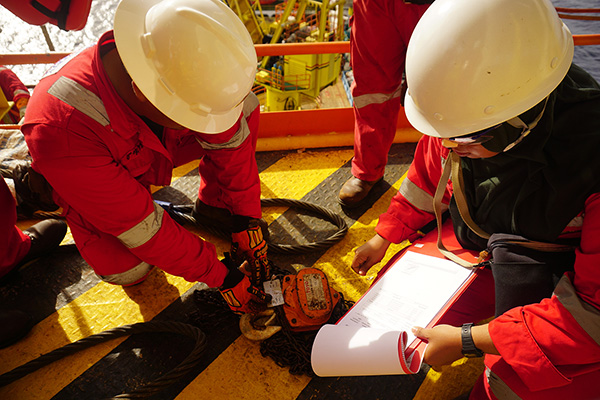The Importance of PPE in The Oil & Gas Industries
PERSONAL PROTECTIVE EQUIPMENT, THE FINAL LINE OF DEFENCE
Since the Covid 19 pandemic hit, the acronym PPE has become much more common place, but in the Oil and Gas industry PPE has always played an important role in the protection of people.
In the HSE ‘hierarchy of controls’ PPE is the final line of defence – as shown in the below points taken from the HSE website:
-
Elimination Redesign the job or substitute a substance so that the hazard is removed or eliminated. For example, duty holders must avoid working at height where they can.
-
Substitution Replace the material or process with a less hazardous one. For example, use a small MEWP to access work at height instead of step ladders. Care should be taken to ensure the alternative is safer than the original.
-
Engineering controls Use work equipment or other measures to prevent falls where you cannot avoid working at height. Install or use additional machinery such as local exhaust ventilation to control risks from dust or fume. Separate the hazard from operators by methods such as enclosing or guarding dangerous items of machinery/equipment. Give priority to measures which protect collectively over individual measures.
-
Administrative controls These are all about identifying and implementing the procedures you need to work safely. For example: reducing the time workers are exposed to hazards (e.g. by job rotation); prohibiting use of mobile phones in hazardous areas; increasing safety signage and performing risk assessments.
-
Personal protective clothes and equipment Only after all the previous measures have been tried and found ineffective in controlling risks to a reasonably practicable level, must personal protective equipment (PPE) be used. For example, where you cannot eliminate the risk of a fall, use work equipment or other measures to minimise the distance and consequences of a fall (should one occur). If chosen, PPE should be selected and fitted by the person who uses it. Workers must be trained in the function and limitation of each item of PPE.
The Hierarchy of Controls shows the importance of PPE and protective clothing in all environments – including the offshore industry.
What are the main types of PPE required offshore?
The PPE falls into several key categories, and it must be said that the PPE required does depend on the task at hand. For example, if you were working at height, you would of course need the necessary harnesses etc. However, generally the offshore PPE falls into these 6 categories:
Here at Hazchem Safety, we would like to find out more about your requirements for any of the above products. Please get in touch on 01224 707468 or sales@hazchemsafety.com
Reference: https://www.hse.gov.uk/construction/lwit/assets/downloads/hierarchy-risk-controls.pdf was used in the making of this blog.

